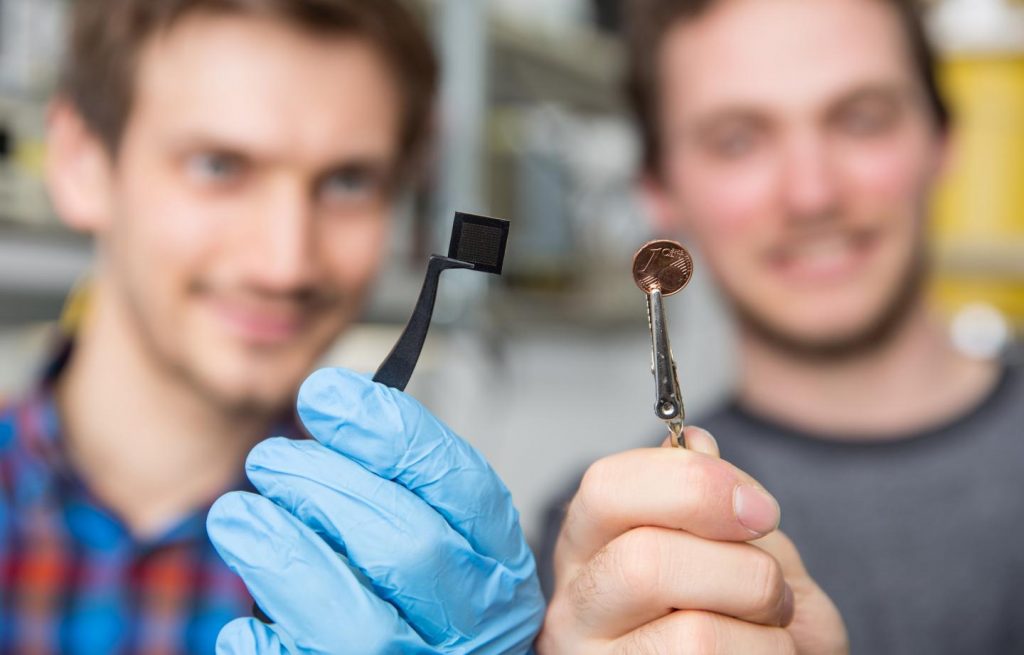Thanks to Dr. Mona Nemer, Canada’s Chief Science Advisor, for the update (via an April 21, 2022 tweet) on the talks concerning Canada’s possible association with the European Union’s Horizon Europe science funding programme.
I’ve done some digging and found this February 6, 2019 article by Michael Rogers for mairecuriealumni.eu which describes the first expressions of interest,
The EU’s biggest ever R&D programme, which will run for seven years from 2021, will offer “more flexible” entry terms for foreign countries, the European Commission’s director-general for research and innovation said Tuesday [February 5, 2019].
Successive EU R&D programmes have welcomed outside participation, but the offer of association membership to Horizon Europe, a status that allows countries to participate in EU research under the same conditions as member states, will be much wider than in the past, said Jean-Eric Paquet.
“Our goal for association is very ambitious and aimed at making it much more agile and palatable for a broader range of partners,” Paquet told a Science|Business conference in Brussels.
Already, there is interest. “I want us to be an associate member,” said Rémi Quirion, chief scientist of Québec. He was speaking for his own province but said he believes the Canadian federal government shares this ambition.
“What’s happening in the US with the current president is an opportunity for us. We need new friends,” Quirion said. “Our Prime Minister Justin Trudeau says, ‘Canada is back on the global scene’, and we want to play with you.”
Negotiations to associate with Horizon Europe, which will be one of the largest funding initiatives in the world for scientific research with a proposed budget of €94.1 billion, haven’t yet begun, though there have been some preliminary discussions.
…
Then, there was this June 15, 2021 article by Goda Naujokaitytė for Science Business,
Canada: doors open to Horizon Europe association
The EU is making moves to welcome Canada as an associated country in the new €95.5 billion R&D programme, Horizon Europe, European Commission president Ursula von der Leyen said in a statement following the EU-Canada summit in Brussels on Monday [June 14, 2021].
“We invited Canadian researchers to participate in our programmes. We want them with us to intensify the exchanges between our innovators, for example in bioeconomy, advanced manufacturing, clean energy, digital technologies, you just name it,” said von der Leyen. “And our Canadian friends were happy about this invitation.”
Following the summit “exploratory discussions” towards “a possible association of Canada” to Horizon Europe will begin. There will be a particular focus on supporting the green and digital transitions, including green hydrogen, artificial intelligence and quantum cooperation.
The Commission has been sounding out to Canada about possible membership for a while, but serious talks on an enhanced level of cooperation with Canada as an associated country under Horizon Europe stalled as EU officials focused on tying up loose ends with Brexit.
Following this, the row on the terms of associated country participation in sensitive quantum and space research projects led to further delays.
…
Beyond Horizon Europe, the Commission hopes to strengthen cooperation with Canada in a number of other areas.
As the COVID-19 pandemic drags on, the two sides hope to ensure uninterrupted vaccine flows between the countries and intensify cooperation in health.
One initiative will be a new health alliance. Details are yet to be revealed, but the alliance will have a global dimension, working to ensure that new technologies, such as mRNA, can reach other parts of the world, like Africa and Latin America. “We will share expertise; we will share lessons learnt and best practices to be better prepared and work closely together on these issues,” said von der Leyen.
Another area of cooperation will be in raw materials. Guaranteed supplies of certain minerals and metals [emphasis mine] are essential to the European economy and currently the EU is too dependent on China.
“We, as Europeans, want to diversify our imports away from producers like China. Because we want more sustainability, we want less environmental damage and we want transparency on labour conditions,” von der Leyen said.
…
It’s not unusual to see raw materials, such as minerals, prove to be one of Canada’s substantive attractions. Interestingly, critical minerals played a starring role in our latest federal budget (see my April 19, 2022 posting and scroll down about 50% of the way to the ‘Mining’ subhead).
Here’s the latest news from an April 21, 2022 news update (titled: Conclusion of exploratory talks on the association of New Zealand and Canada to Horizon Europe: towards formal negotiations) on the European Commission website (as mentioned on Dr. Nemer’s April 21, 2022 tweet),
The informal exploratory talks launched on 10 February 2022 between the European Commission, DG Research and Innovation, and New Zealand’s Ministry of Business, Innovation and Employment, and on 15 July 2021 between DG Research and Innovation and Innovation, Science and Economic Development Canada (ISED), have reached a conclusion.
These exploratory talks have paved the way to move towards the next stage of the process, the formal negotiation of the association agreement. They provided all parties with the opportunity to discuss the technical aspects of the envisaged association, including the prospective terms and conditions for participation in Horizon Europe actions and in the Programme’s governance.
The Commission will now prepare recommendations to the Council to launch the two negotiation processes and seek negotiating directives. Once the Council adopts such directives, the formal negotiations could commence upon readiness of New Zealand and of Canada. All parties expressed the hope that New Zealand and Canada could be associated to Horizon Europe as from 2023.
…
Although it’s dated December 21, 2021 this news update from the European Commission (titled: Updates on the association of third countries to Horizon Europe) is being continuously updated with the latest being dated April 25, 2022,
As of 25 April 2022, Armenia, Bosnia and Herzegovina, Georgia, Iceland, Israel, Kosovo*, Moldova, Montenegro, North Macedonia, Norway, Serbia and Turkey have applicable association agreements in place. Association agreements have also been signed with Albania, Tunisia, Ukraine. They are currently undergoing national ratification procedures and are expected to enter into force shortly.
…
It gives you an idea of the international scope.


